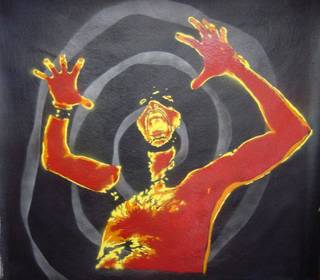Crisis is our Brand review
Crisis is Our Brand
By Oggy Bleacher
If you think the end justifies the means then check out “Crisis is Our Brand.” A documentary that should be as boring as an Alan Greenspan report, “Crisis is Our Brand” actually delivers some thrilling drama. That’s what happens in a country like
What do you do when you are running for reelection as President of Bolivia and you know that the voters think you are as crooked as
In 2002 GCS was hired by Bolivian presidential candidate Gonzalo Sanchez de Lozada (Goni) to get him elected at all costs. Director Rachel Boynton was there from the first phone call as Rosner reassured Goni that manipulating the media and controlling minds is exactly what GCS is good at. A shepherd keeps sheep under control until they can be slaughtered. GCS does the exact same thing with the minds of voters. They remind me of a team from “The Apprentice” run amok in national politics.
Though “Crisis” offers an inside look at political maneuvering during a tight campaign, the underlying motivation of the players ultimately remains a mystery. Goni is running for president, but he doesn’t show any signs of wanting to be president. He reminds me of a trust fund brat who wants a car even though he isn’t old enough to drive. He wants it because he doesn’t want anyone else to have it. And he wants it RIGHT NOW! So he hires GCS to hold his hand through the familiar (to Americans) process of negative campaign ads, slogans, rallies, interviews, color schemes and mind control. But why does Goni want to be president? That’s a question that Rachel Boynton never gets a straight answer to. And why does GCS want to help a guy who couldn’t manage a McDonalds? They claim he is the best of three candidates, but did they spend ten minutes with either of the other two candidates? I seriously doubt it. So GCS gets into the minds of voters, but not into the mind of the flawed Goni.
Alas, getting elected and leading a country are two completely different things, a lesson the people of
Grade B
L.A. opening: 4/14/06
Crisis is Our Brand
Directed by: Rachel Boynton
James Carville, Jeremy Rosner, Tal Silberstein, Goni
MPAA Rating: NR
Runtime: 87 Minutes
Release Company: Koch Lorber Entertainment

